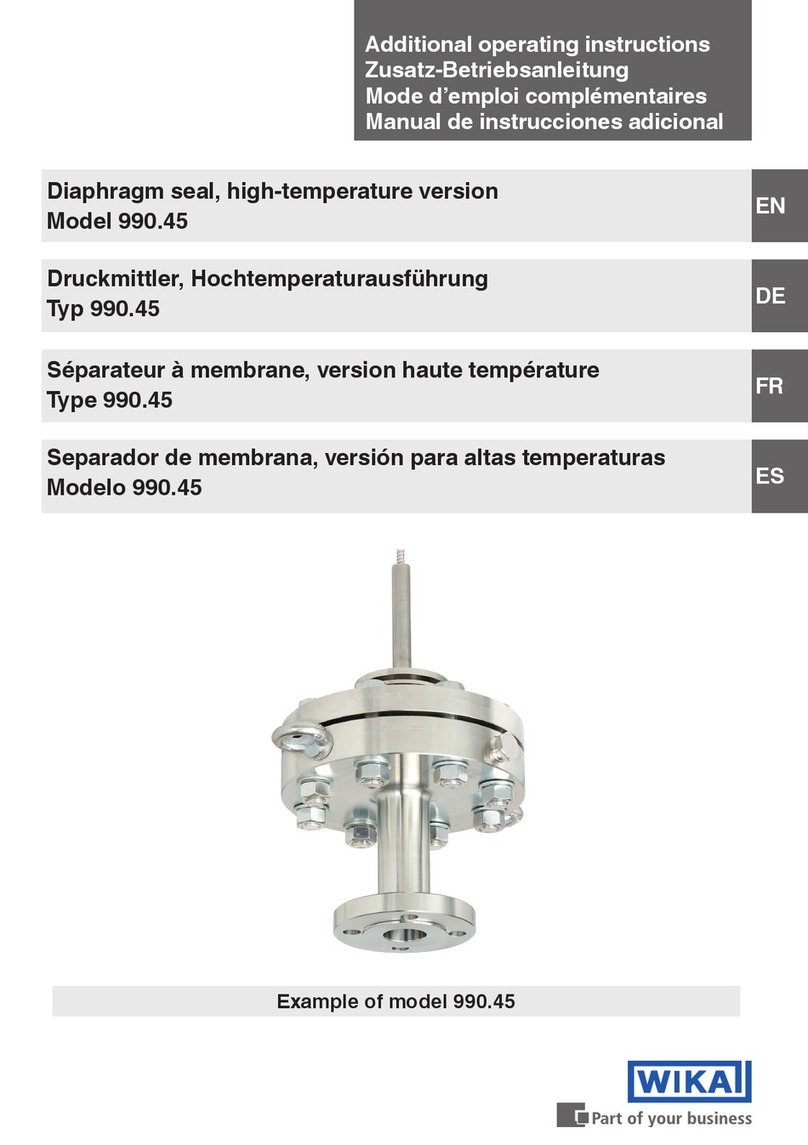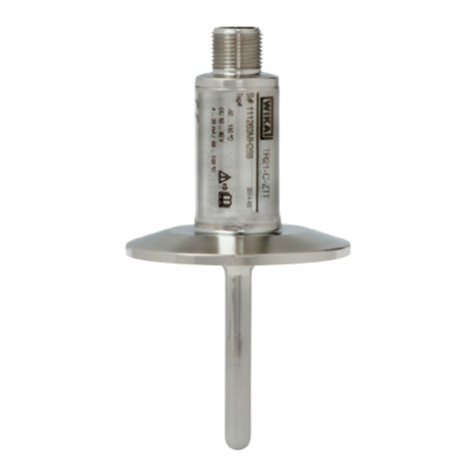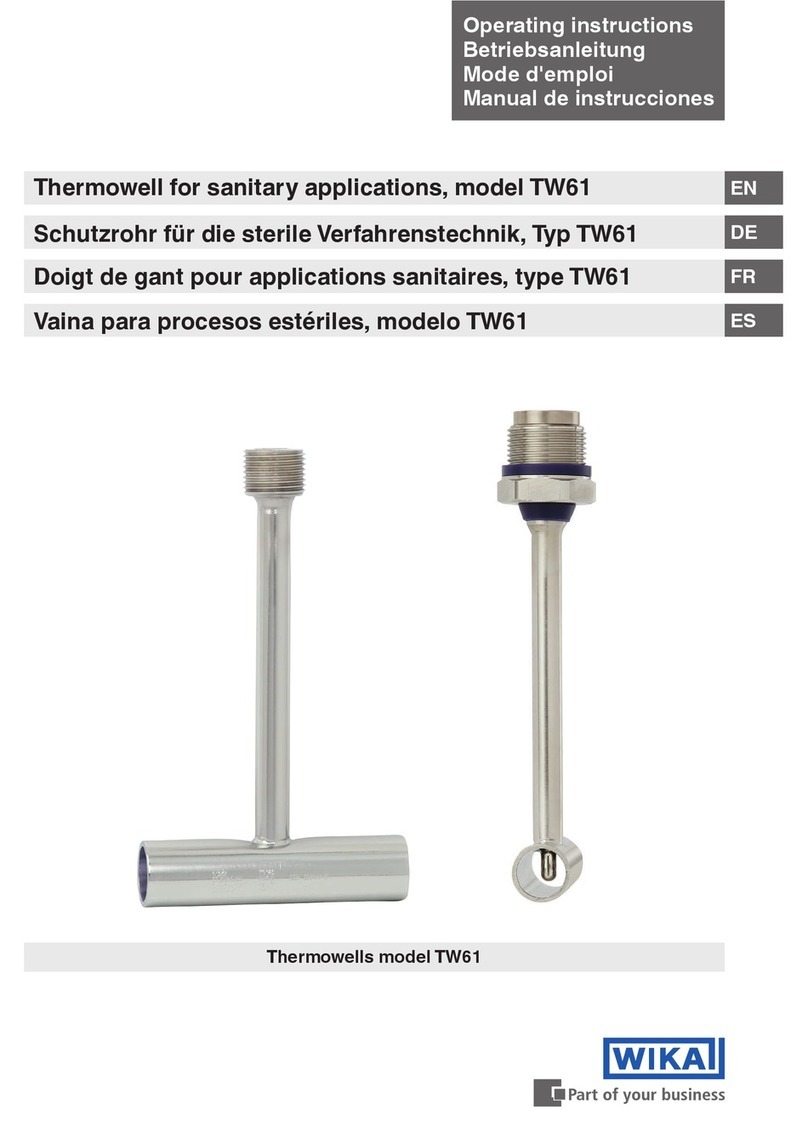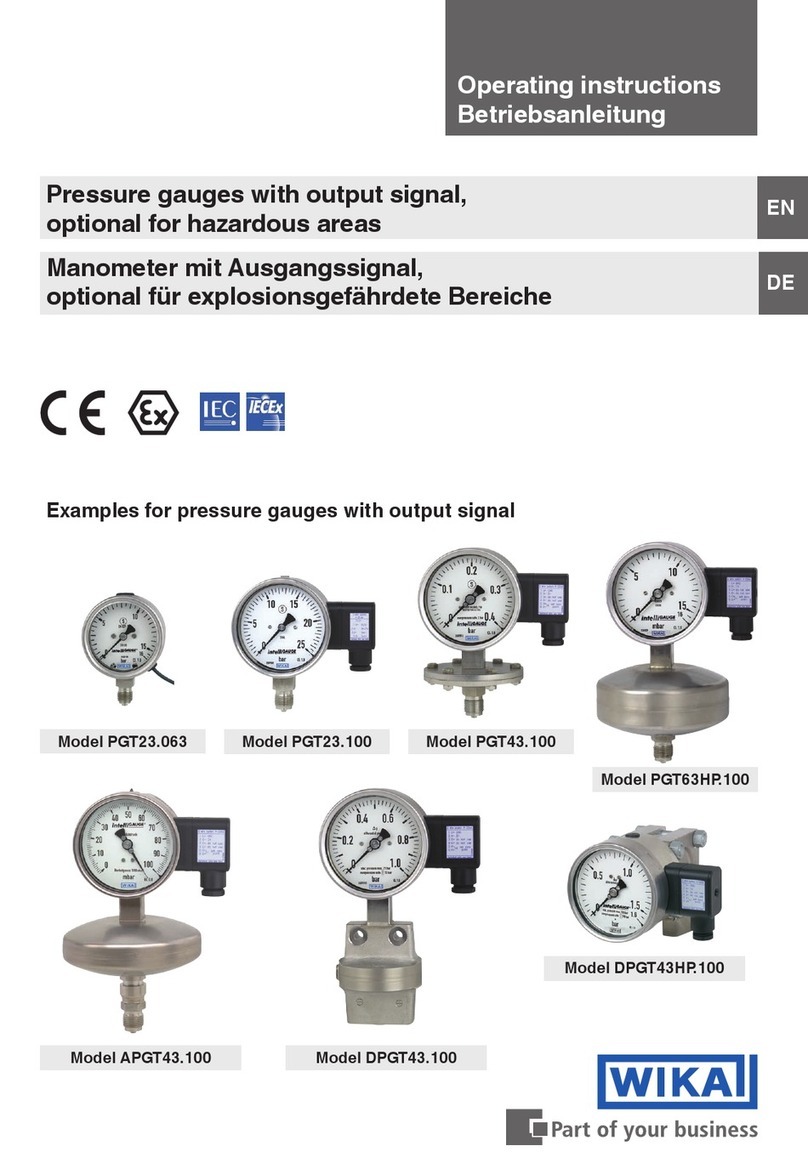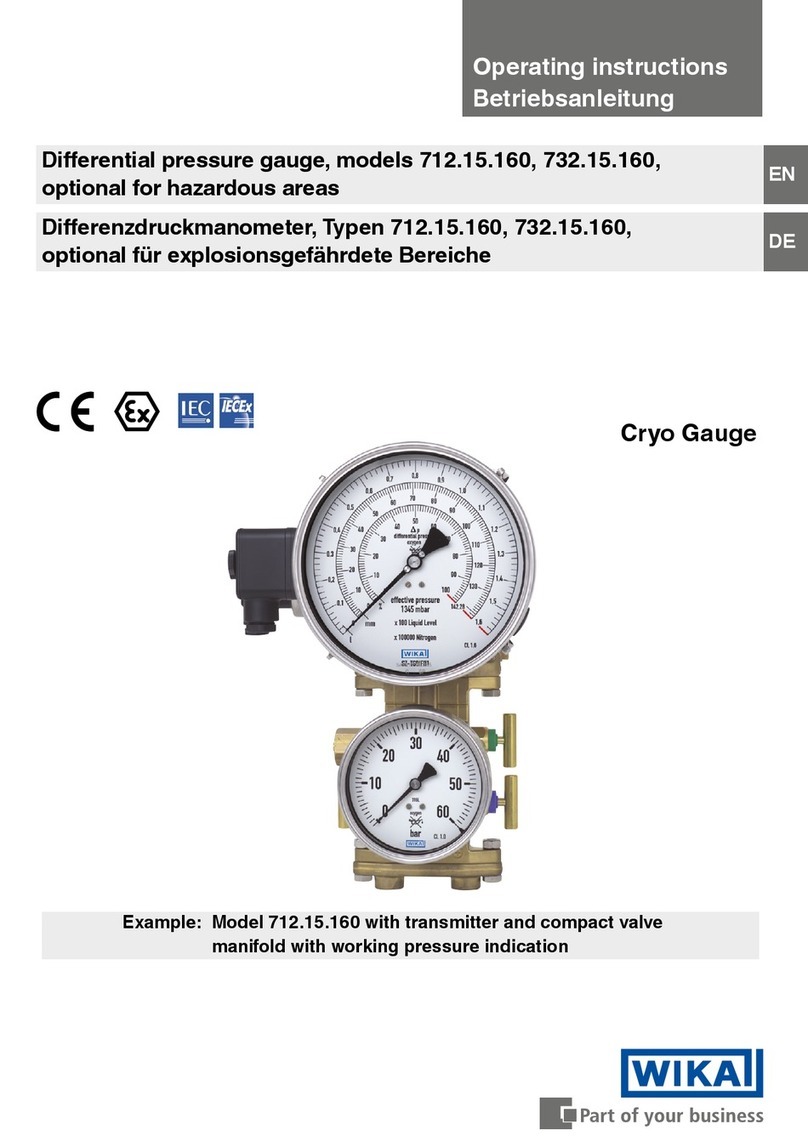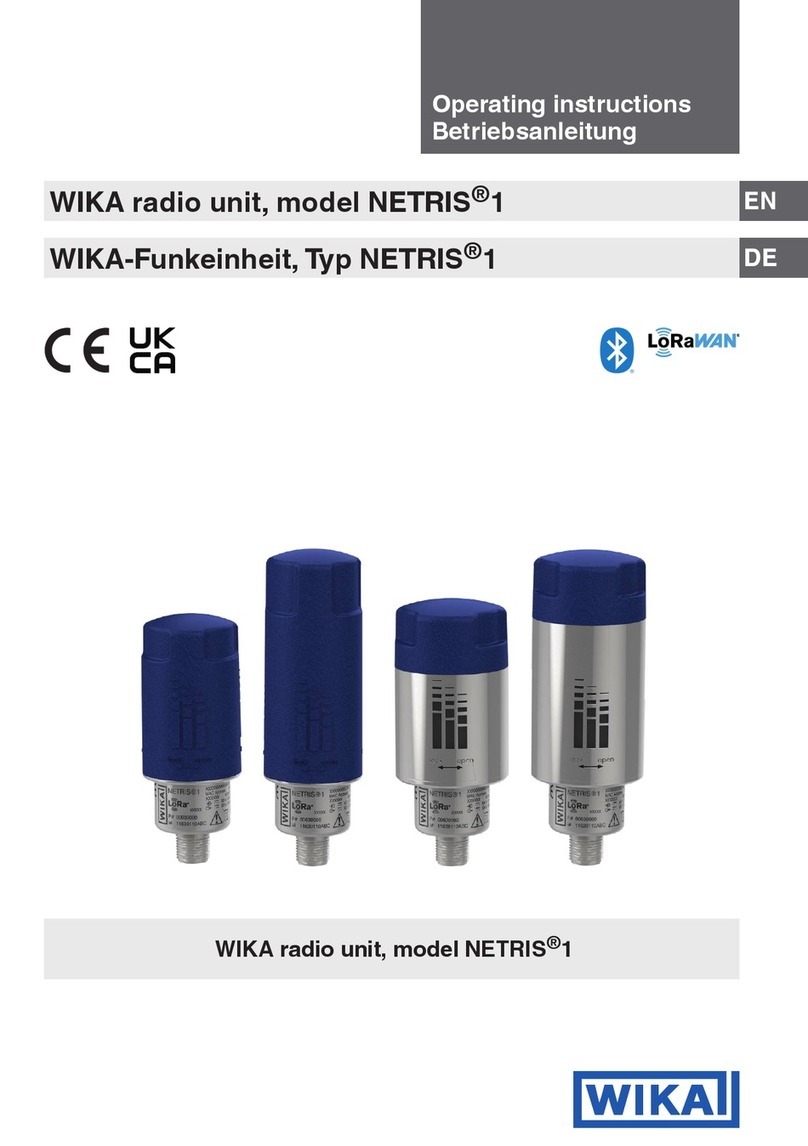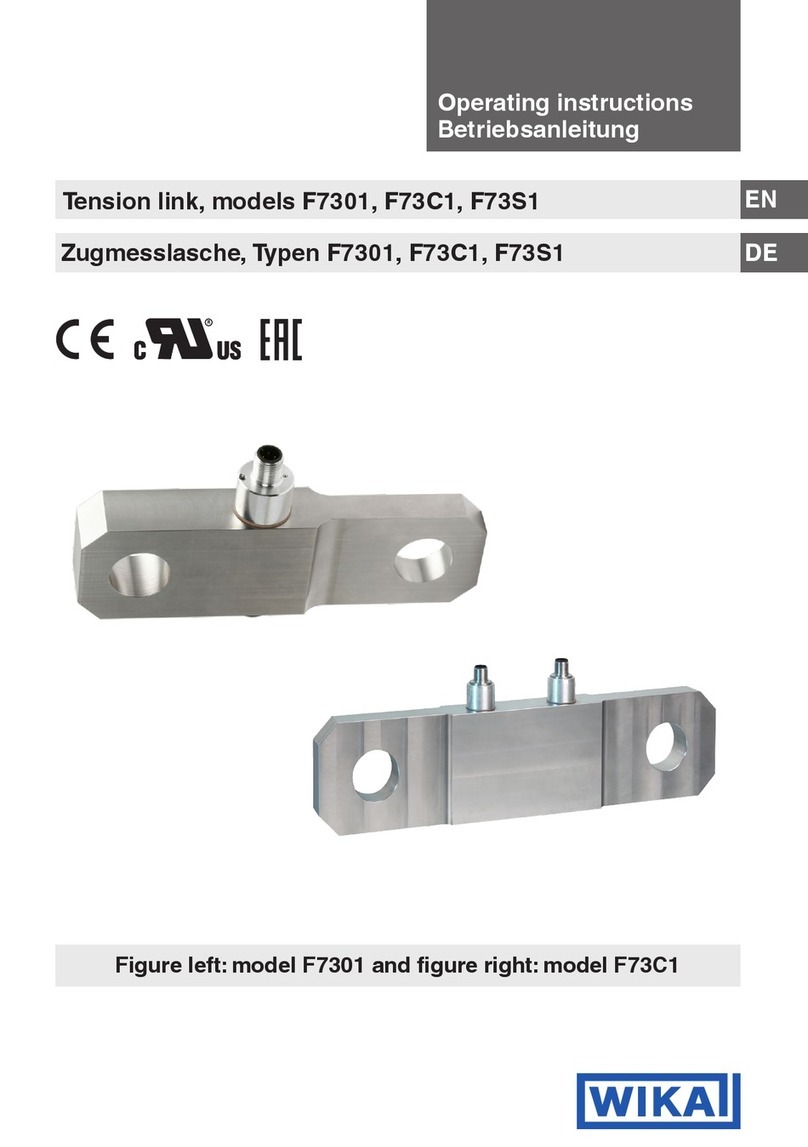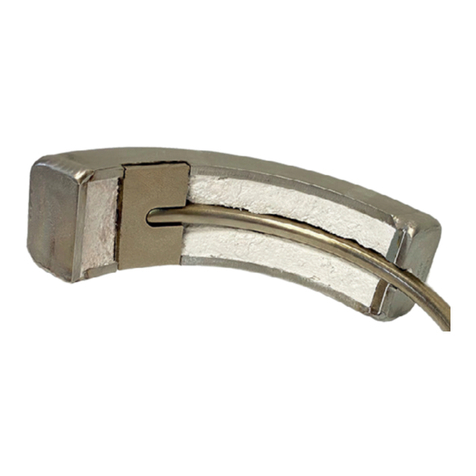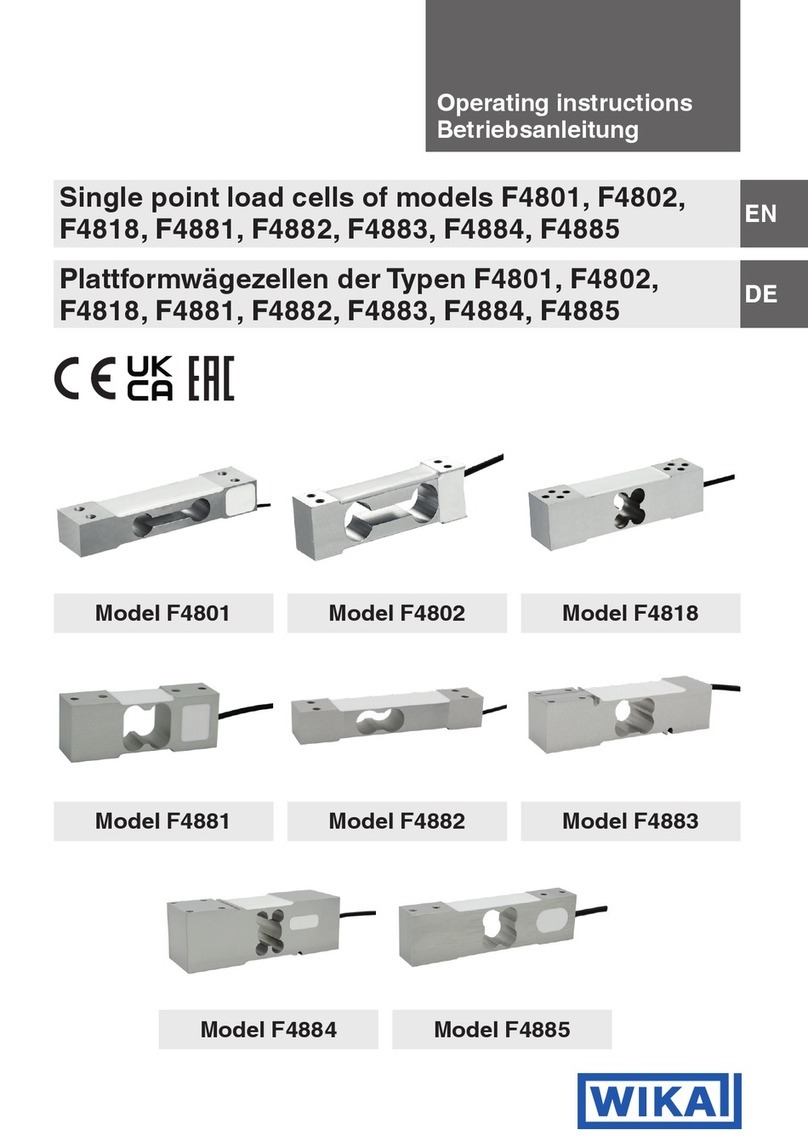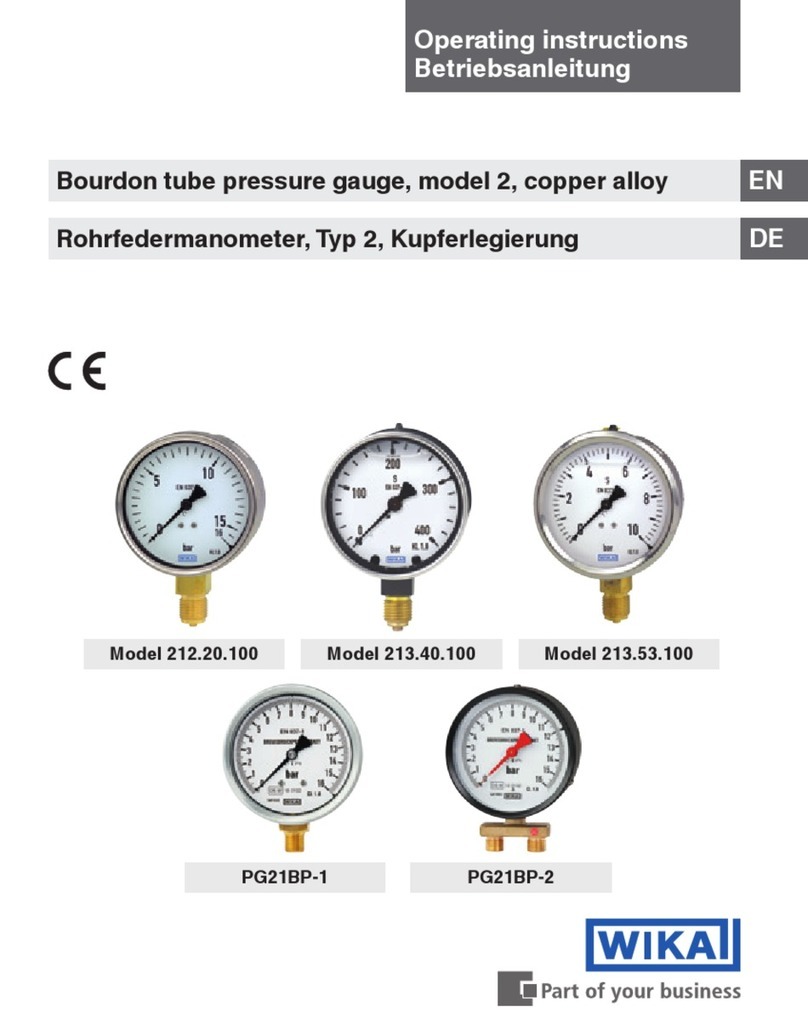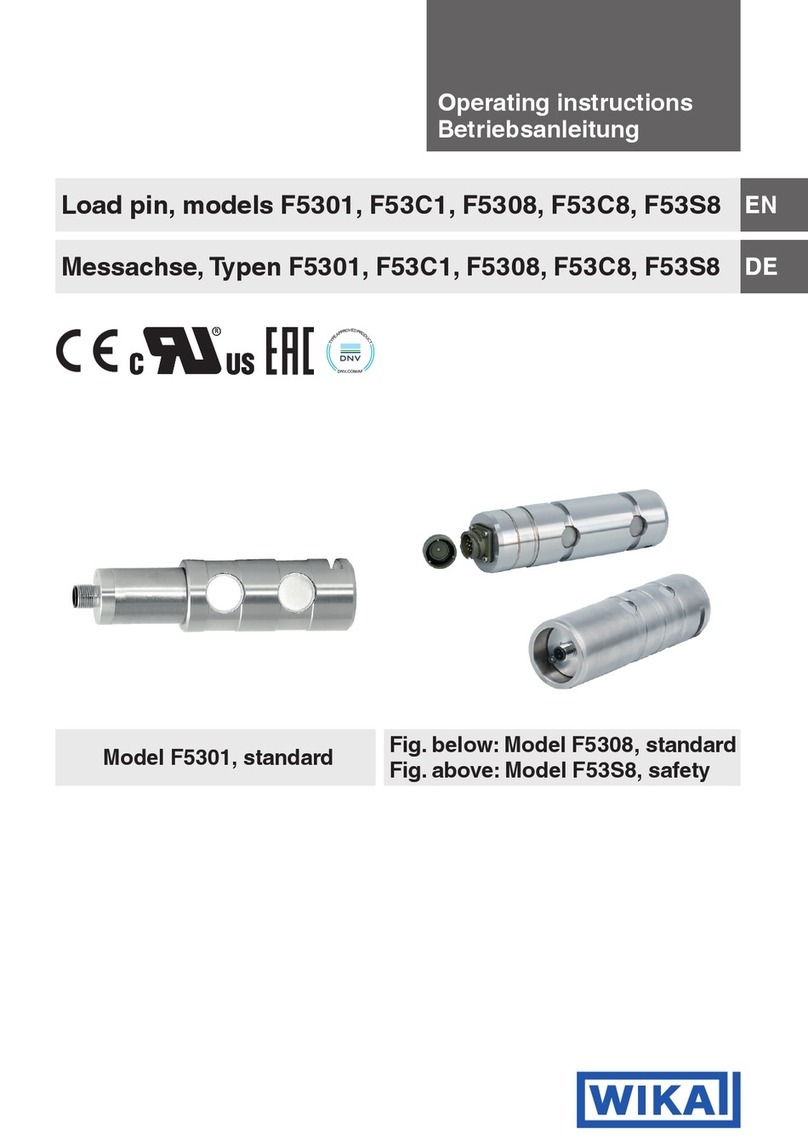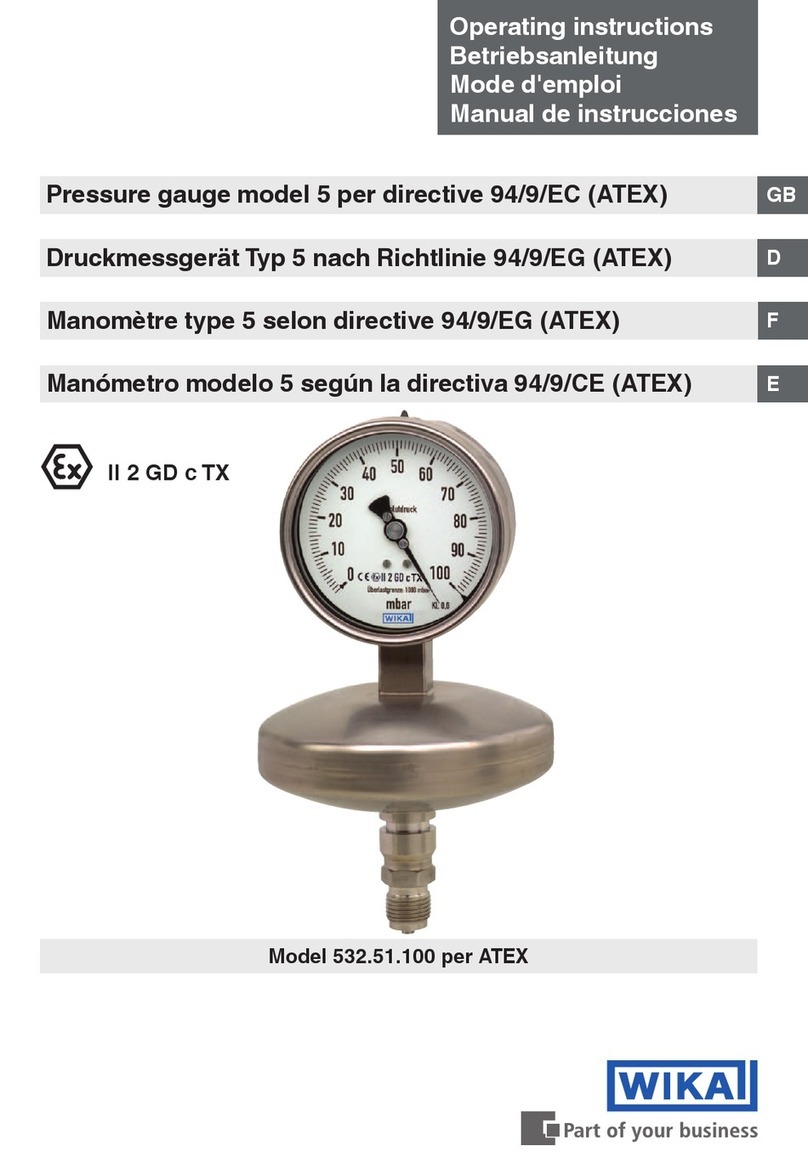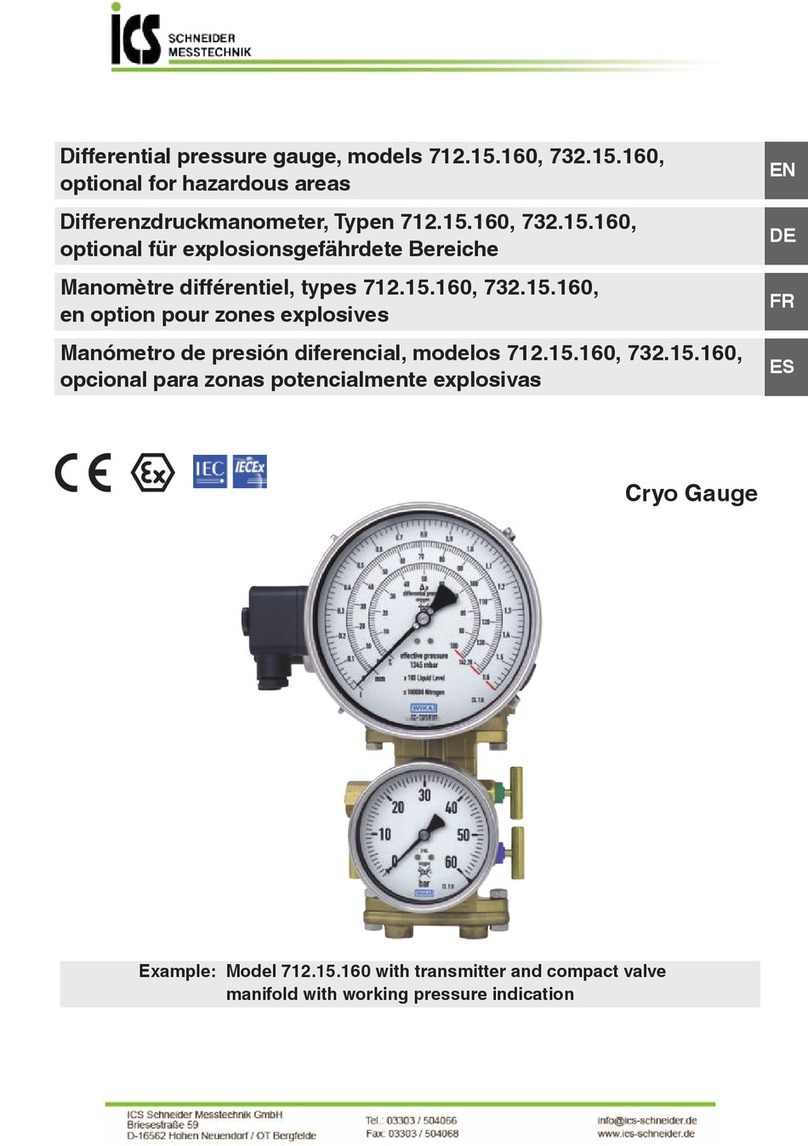
3WIKA operating instructions, model DSSA11SA
EN
14543105.01 08/2023 EN/DE
Contents
Contents
1. General information 5
1.1 Abbreviations, definitions . . . . . . . . . . . . . . . . . . . . . . 6
1.2 Explanation of symbols . . . . . . . . . . . . . . . . . . . . . . . 6
2. Design and function 7
2.1 Overview, diaphragm seal system . . . . . . . . . . . . . . . . . . . 7
2.2 Description . . . . . . . . . . . . . . . . . . . . . . . . . . . 7
2.3 Scope of delivery . . . . . . . . . . . . . . . . . . . . . . . . . 8
2.4 Product passport . . . . . . . . . . . . . . . . . . . . . . . . . 8
3. Safety 8
3.1 Intended use. . . . . . . . . . . . . . . . . . . . . . . . . . . 8
3.2 Improper use . . . . . . . . . . . . . . . . . . . . . . . . . 10
3.3 Responsibility of the operator . . . . . . . . . . . . . . . . . . . . 10
3.4 Personnel qualification . . . . . . . . . . . . . . . . . . . . . . 11
3.5 Use of accessories and spare parts . . . . . . . . . . . . . . . . . . 11
3.6 Labelling, safety marks . . . . . . . . . . . . . . . . . . . . . . 12
3.7 Compliance with 3-A conformity . . . . . . . . . . . . . . . . . . . 12
3.8 Compliance with EHEDG conformity . . . . . . . . . . . . . . . . . 12
4. Transport, packaging and storage 13
4.1 Transport . . . . . . . . . . . . . . . . . . . . . . . . . . . 13
4.2 Packaging . . . . . . . . . . . . . . . . . . . . . . . . . . 13
4.3 Storage . . . . . . . . . . . . . . . . . . . . . . . . . . . 13
5. Commissioning, operation 14
5.1 General mounting instructions. . . . . . . . . . . . . . . . . . . . 14
5.2 Mounting instructions for diaphragm seal systems with 3-A and EHEDG . . . . . 14
5.3 Requirements for mounting point . . . . . . . . . . . . . . . . . . . 14
5.4 Mechanical mounting. . . . . . . . . . . . . . . . . . . . . . . 15
5.5 Electrical mounting . . . . . . . . . . . . . . . . . . . . . . . 16
5.6 Teach function (if available). . . . . . . . . . . . . . . . . . . . . 16
5.7 Colour codes of the 360° LED status indication . . . . . . . . . . . . . . 17
5.8 Switching functions . . . . . . . . . . . . . . . . . . . . . . . 18
5.9 Damping function (0 ... 65 s) (configurable via IO-Link) . . . . . . . . . . . 19
5.10 Zero point setting . . . . . . . . . . . . . . . . . . . . . . . . 19
5.11 Description of the IO-Link functionality . . . . . . . . . . . . . . . . . 19
5.12 Commissioning . . . . . . . . . . . . . . . . . . . . . . . . . 19
6. Faults 20
7. Cleaning, maintenance and recalibration 21
7.1 Exterior cleaning of the diaphragm seal system . . . . . . . . . . . . . . 21
7.2 Cleaning of the diaphragm . . . . . . . . . . . . . . . . . . . . . 22
7.3 Cleaning in place (CIP) cleaning process . . . . . . . . . . . . . . . . 22
7.4 Maintenance. . . . . . . . . . . . . . . . . . . . . . . . . . 22
7.5 Recalibration . . . . . . . . . . . . . . . . . . . . . . . . . 22
